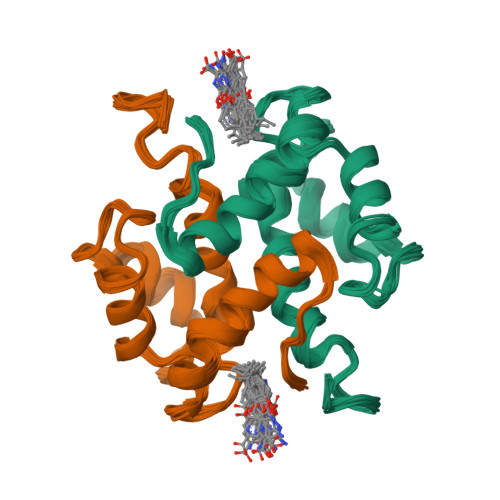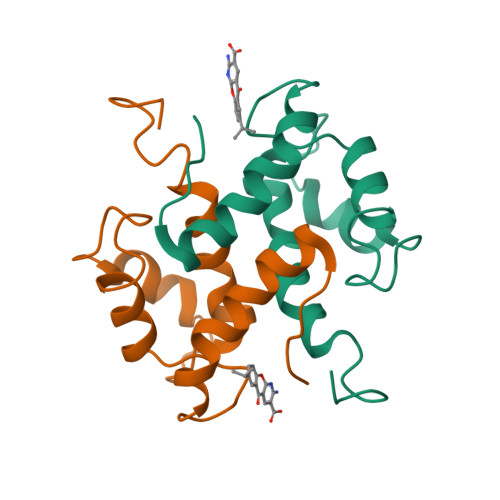Molecular level interactions of S100A13 with amlexanox: inhibitor for the formation of multi-protein complex in non-classical pathway of the acidic fibroblast growth factor
Rani, S.G., Mohan, S.K., Yu, C.(2010) Biochemistry
- PubMed: 20178375
- DOI: https://doi.org/10.1021/bi9019077
- Primary Citation of Related Structures:
2KOT - PubMed Abstract:
S100A13 and acidic fibroblast growth factor (FGF1) are involved in a wide array of important biological processes, such as angiogenesis, cell differentiation, neurogenesis, and tumor growth. Generally, the biological function of FGF1 is to recognize a specific tyrosine kinase on the cell surface and initiate the cell signal transduction cascade. Amlexanox (2-amino-7-isopropyl-5-oxo-5H-[1]benzopyrano[2,3-b]pyridine-3-carboxylic acid) is an antiallergic drug that binds S100A13 and FGF1 and inhibits the heat shock induced release of S100A13 and FGF1. In the present study, we investigated the interaction of amlexanox with S100A13 using various biophysical techniques, including isothermal titration calorimetry, fluorescence spectrophotometry, and multidimensional NMR spectroscopy. We report the three-dimensional solution structure of the S100A13-amlexanox complex. These data show that amlexanox binds specifically to the FGF1-S100A13 interface and prevents the formation of the FGF1-releasing complex. In addition, we demonstrate that amlexanox acts as an antagonist of S100A13 by binding to its FGF1 binding site and subsequently inhibiting the nonclassical pathway of these proteins. This inhibition likely results in the ability of amlexanox to antagonize the angiogenic and mitogenic activity of FGF1.
Organizational Affiliation:
Department of Chemistry, National Tsing Hua University, Hsinchu, Taiwan.

















